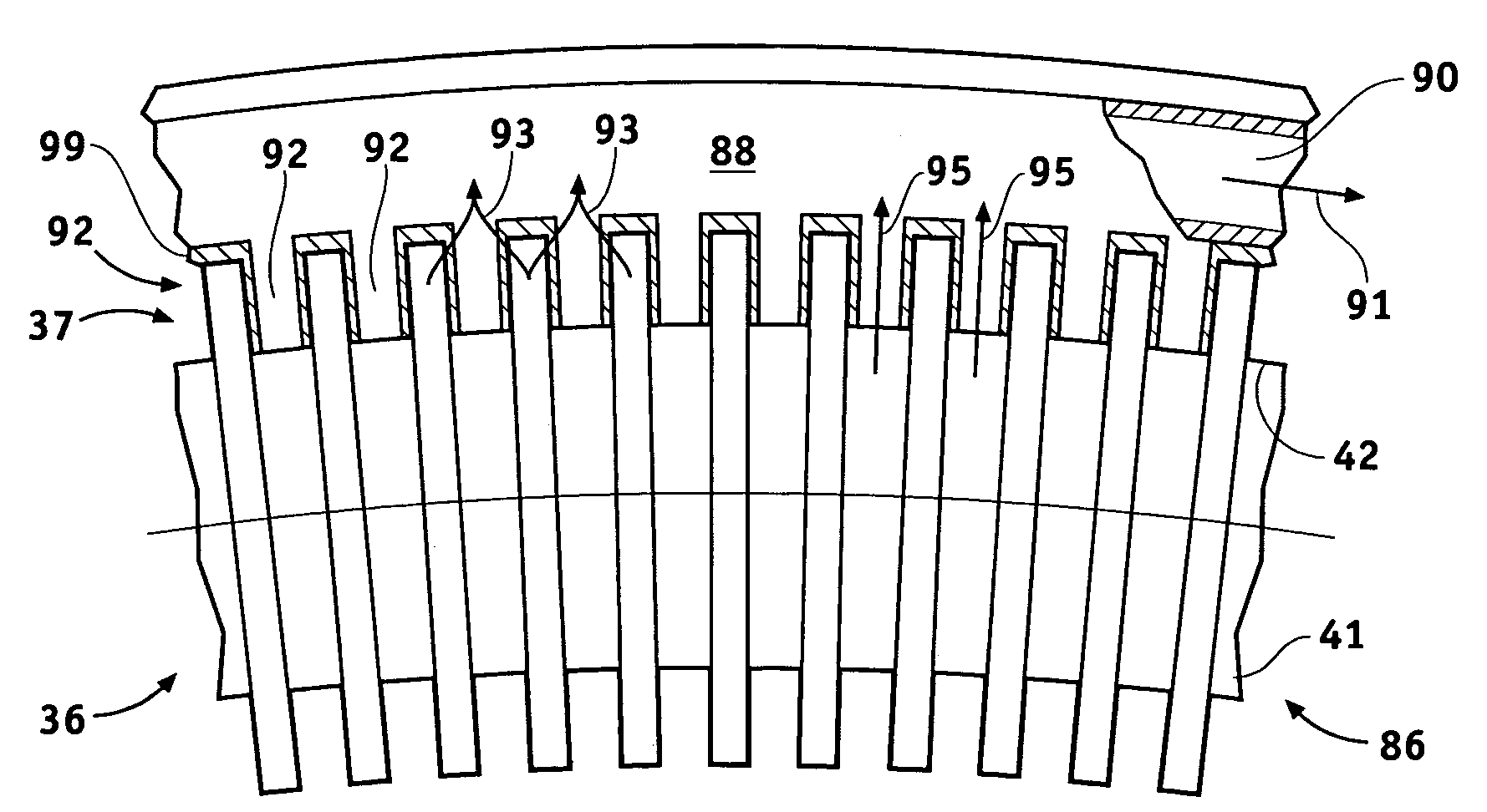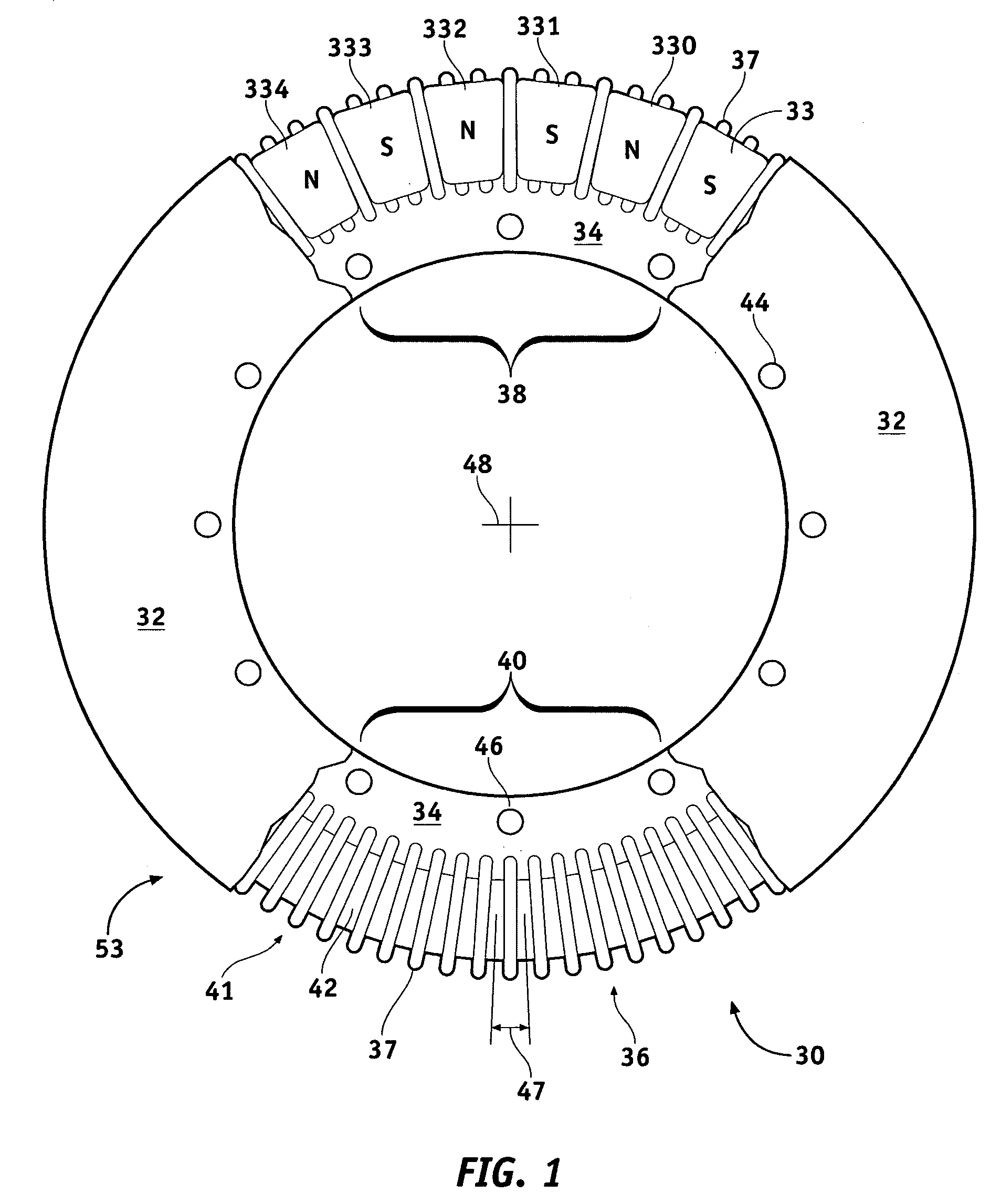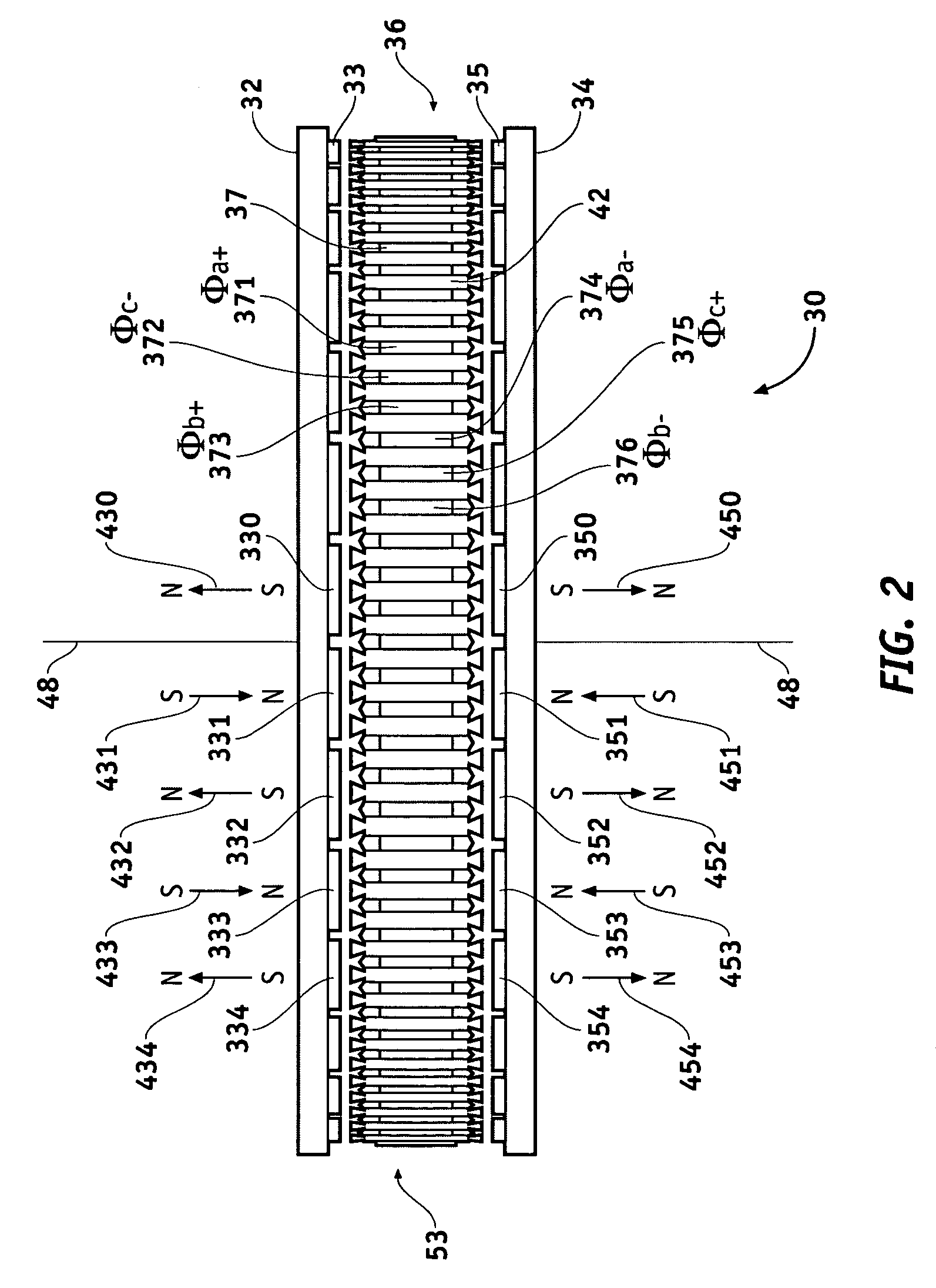Cooling and handling of reaction torque for an axial flux motor
a technology of reaction torque and axial flux, which is applied in the field of electric motors, can solve the problems of limiting the sizing and power rating of motors, affecting the reliability of motors,
- Summary
- Abstract
- Description
- Claims
- Application Information
AI Technical Summary
Problems solved by technology
Method used
Image
Examples
case 1 (
Case 1(M*indexlow)
[0099]Mref is set to Mhigh and Idsat+is set to zero. With these settings the error signal to the PI block 196 is positive and the output of voltage loop 186 is zero since the upper saturation limit in the saturation block 198 is set to zero. Thus voltage loop 186 is deactivated. The negative saturation limit of block 198 has no consequence, however, for convenience it is set to −K2|Id*|.
case 2 (
Case 2(M*index≧Mlow and M*index high
[0100]Mref is set to Mindex. The upper and the lower saturation limits in block 198 are set to K1|Id*|and −K2|Id*| respectively. These settings activate voltage loop 186. Voltage loop 186 loop is activated when M*index exceeds the lower limit Mlow. This lower limit can be set to any value. Typically when current regulator 160 is operating in the linear region (e.g., M*index182 has adequate voltage margin and help from voltage loop 186 is generally not required. Therefore, the lower limit Mlow may be set at the transition value between the linear and the non-linear region or slightly lower. This allows a smooth transition from the linear to the non-linear region.
[0101]The d-axis current command I*d is calculated in block 162 to maximize the system performance while properly utilizing the bus voltage. Therefore, ideally under steady state condition M* index should closely match with Mindex and no help would be needed from voltage loop 186. In other ...
case 3 (
Case 3(M*index≧Mhigh)
[0102]If M*index exceeds a certain pre-defined limit Mhigh(see also FIG. 17), then Mref is set to Mhigh. The Mhigh value basically sets the upper limit of operation in the overmodulation region. In our experiment we set this value to the 95% of six-step operation. Voltage control to full six-step would, however, not be recommended since the voltage margin between six-step operation and 95% of six-step operation is needed by the current loop to take care of any transient operation. The saturation limits of block 198 are therefore kept unchanged from the values of case 2.
[0103]The overall operation of control system function 160 of FIGS. 20A-B (carried out by system 500 of FIG. 22) is now described. The voltage loop of control function 160 comprising functions 188, 190, 192, 194, 196, 198 and the decision table described in Table I, directly modify the d-axis current of the machine to control the machine voltage. Based on torque command T*, machine speed ωr and DC...
PUM
 Login to View More
Login to View More Abstract
Description
Claims
Application Information
 Login to View More
Login to View More - R&D
- Intellectual Property
- Life Sciences
- Materials
- Tech Scout
- Unparalleled Data Quality
- Higher Quality Content
- 60% Fewer Hallucinations
Browse by: Latest US Patents, China's latest patents, Technical Efficacy Thesaurus, Application Domain, Technology Topic, Popular Technical Reports.
© 2025 PatSnap. All rights reserved.Legal|Privacy policy|Modern Slavery Act Transparency Statement|Sitemap|About US| Contact US: help@patsnap.com



